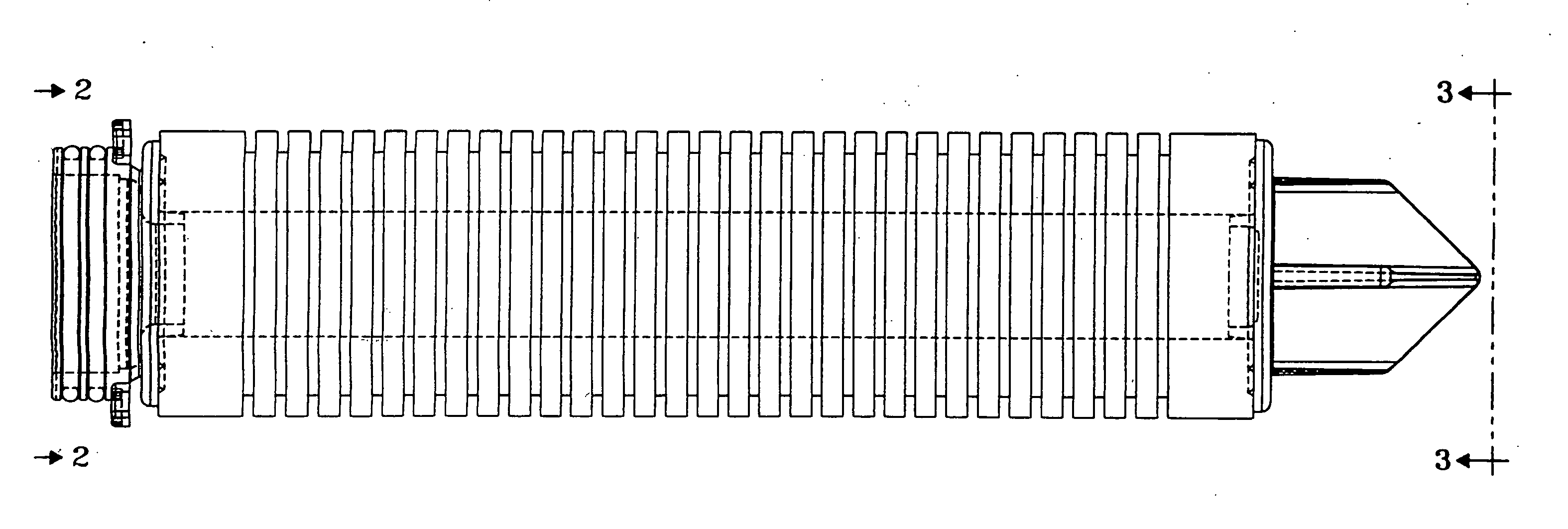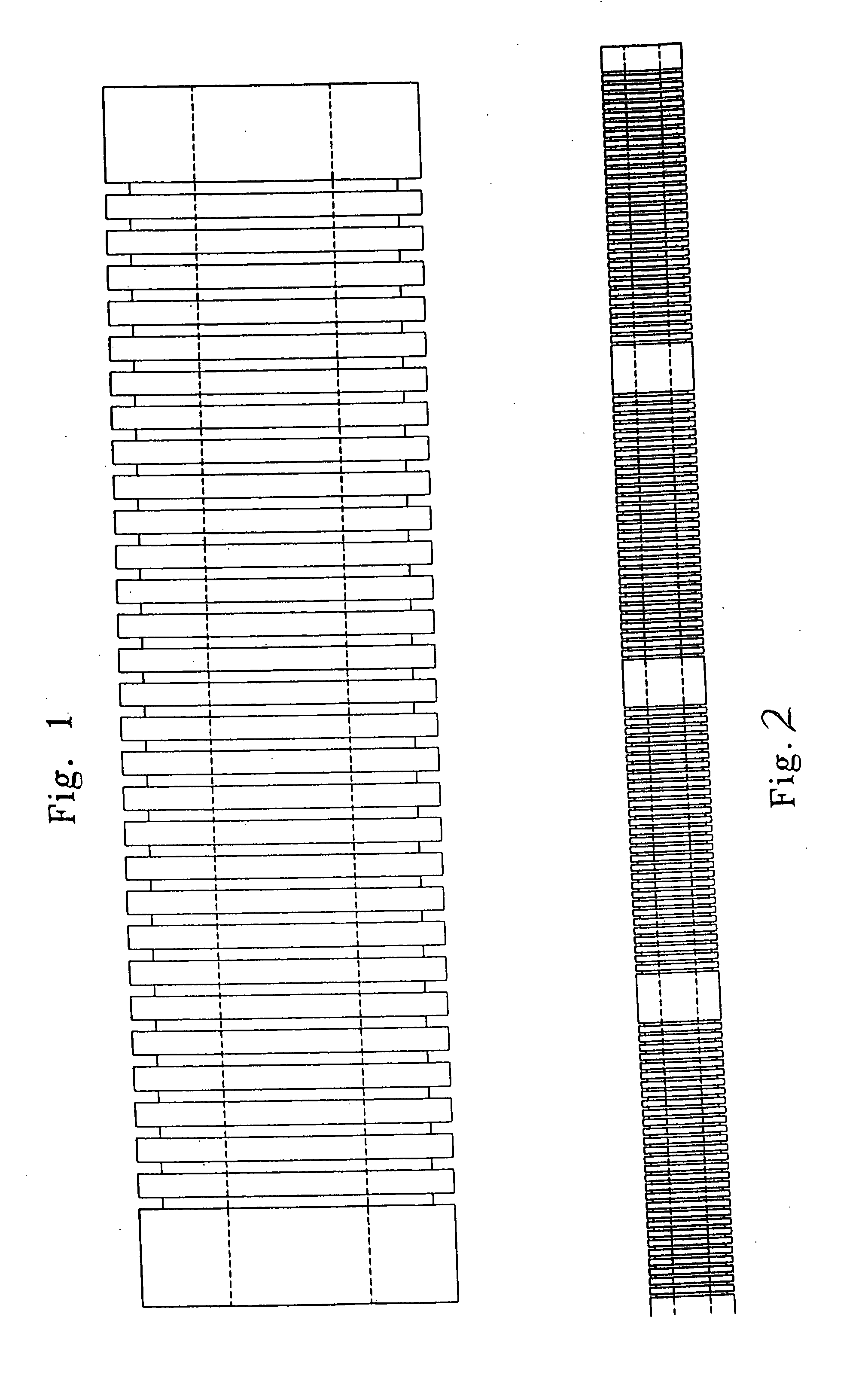Fabrication of filter elements using polyolefins having certain rheological properties
a technology of polyolefins and filter elements, applied in gravity filters, separation processes, filtration separation, etc., can solve the problems of low differential pressure, inability to achieve all the desired filtration performance characteristics, and long service li
- Summary
- Abstract
- Description
- Claims
- Application Information
AI Technical Summary
Benefits of technology
Problems solved by technology
Method used
Image
Examples
Embodiment Construction
[0043] In accordance with the present disclosure, it has now been found that, in the prior absence of commercially available polyolfins having desired properties, controlled degradation of a polypropylene starting material characterized by a high molecular weight (low MFI) and broad molecular weight results in a modified polypropylene that possesses desirable properties for use in fabricating filter elements in general and cylindrical depth filter elements in particular.
[0044] In one exemplary embodiment of the present disclosure, filter elements are fabricated from a polypropylene polymer exhibiting a melt flow index of about 35 to about 350, a molecular weight (M.sub.p) of about 140,000 to about 180,000, and a polydispersity less than 5. The polypropylene polymer was grade EOD-99-10 received from Atofina Petrochemicals, Inc. of Houston, Tex.
[0045] In another exemplary embodiment of the present disclosure, in order to produce the desired polypropylene polymer exhibiting a melt flow...
PUM
| Property | Measurement | Unit |
|---|---|---|
| Fraction | aaaaa | aaaaa |
| Dynamic viscosity | aaaaa | aaaaa |
| Viscosity | aaaaa | aaaaa |
Abstract
Description
Claims
Application Information
 Login to View More
Login to View More - R&D
- Intellectual Property
- Life Sciences
- Materials
- Tech Scout
- Unparalleled Data Quality
- Higher Quality Content
- 60% Fewer Hallucinations
Browse by: Latest US Patents, China's latest patents, Technical Efficacy Thesaurus, Application Domain, Technology Topic, Popular Technical Reports.
© 2025 PatSnap. All rights reserved.Legal|Privacy policy|Modern Slavery Act Transparency Statement|Sitemap|About US| Contact US: help@patsnap.com



